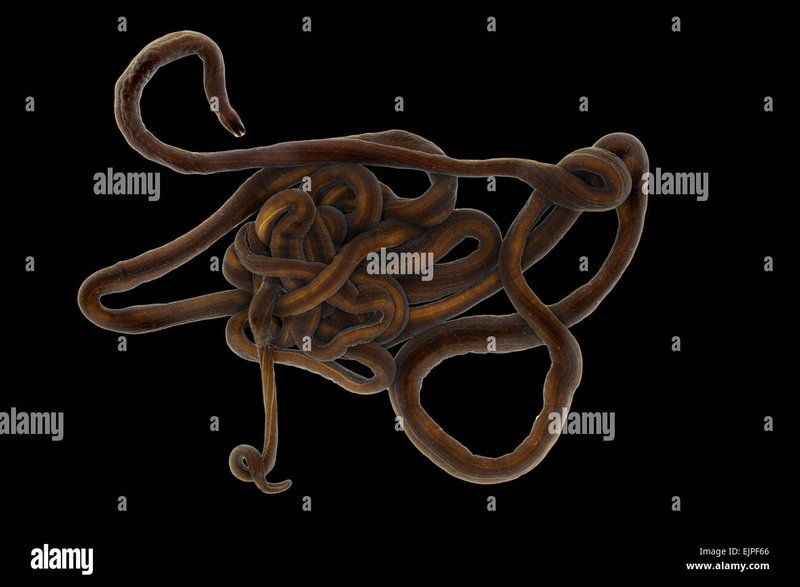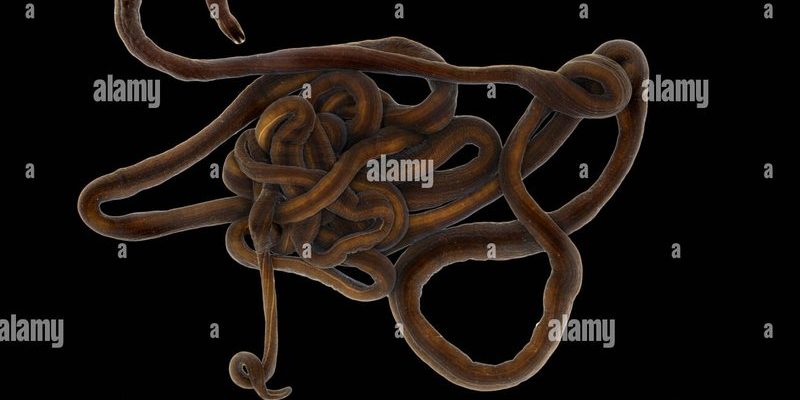
You might wonder what makes the bootlace worm so special in terms of its nervous system. Picture it like a sprawling, tangled web that controls everything the worm does, from swimming through water to sensing its environment. Understanding how this unique system works can shed light on not just the bootlace worm but also on the broader spectrum of life forms and how they adapt to their surroundings.
Let’s explore the *nervous system of bootlace worms*, starting from the basics of their biology to how this sophisticated network supports their life underwater.
What Makes the Bootlace Worm Unique?
First off, you might be wondering what exactly a bootlace worm is and why it’s worth learning about. Bootlace worms belong to a group called *Nemertea* or ribbon worms. They’re easily recognizable by their long, slender bodies that can range in color from yellow to reddish-brown. Although they’re often found in shallow coastal waters of the North Atlantic, they can be pretty elusive, lurking beneath the seabed.
Their size might make them seem intimidating, but they are more fascinating than frightening. Bootlace worms have some pretty unique adaptations that allow them to thrive in their environments, including a highly developed **nervous system**. This system is central to how they navigate, hunt, and interact with the world around them.
What’s remarkable is that bootlace worms possess a structure known as a **nervous cord**, which is different from the spinal cords we associate with vertebrates. This cord runs along their bodies and connects to nerve nets, allowing them to coordinate their movements and respond to stimuli effectively.
The Structure of their Nervous System
Let’s dive deeper into the specifics of their nervous system! The bootlace worm has a more complex nervous system than you might expect for such a simple organism. Instead of a centralized brain, they have a **nerve net and ganglia**.
– **Nerve Net**: This is a network of interconnected neurons that allows for communication throughout the organism. Think of it like a giant telephone network; every nerve cell can receive and send information to others, helping the worm react almost instantaneously to its environment.
– **Ganglia**: These clusters of nerve cells act somewhat like mini-brains, processing sensory information and helping to coordinate movements. The worm has two main ganglia located in the head region that control various functions, making them essential for survival.
This decentralized system gives bootlace worms an edge. They can quickly respond to danger, like predators, by contracting their bodies. Their nervous system allows for rapid reflexes that help them evade threats in their watery habitats.
How the Nervous System Affects Movement
Now that we understand how the nervous system is structured, let’s talk about how it influences movement. Bootlace worms are fascinating swimmers and burrowers. Their ability to glide gracefully through the water depends heavily on their nervous system.
When a bootlace worm wants to move, its nervous system sends signals to its muscles, causing them to contract and expand in a coordinated manner. This creates a wave-like motion, propelling the worm forward. Imagine a snake slithering through the grass; it’s a similar principle but adapted for an aquatic environment.
Moreover, the flexibility of their body enables them to squeeze into tight spaces and navigate through various substrates on the ocean floor. Their nervous system helps them assess their surroundings and choose the best route for movement, whether it’s to chase prey or hide from predators.
Feeding and Hunting: The Role of the Nervous System
Feeding is another fascinating aspect of bootlace worm biology that showcases the importance of their nervous system. These worms are carnivorous and often prey on smaller marine organisms, like crustaceans and other worms. Their ability to sense food sources is largely linked to their neural network.
Bootlace worms possess specialized structures called **proboscis**, which they can extend rapidly to capture prey. The nervous system controls the contraction of muscles that allow the proboscis to launch from its body. This response is nearly instantaneous, showcasing the efficiency of their nerve net.
Once they grasp their prey, they use enzymes to help digest it externally, making feeding a two-step process. The nervous system plays a crucial role here, too, as it helps the worm process sensory information about its surrounding environment, ensuring it can successfully catch and consume food.
Environmental Adaptations and Sensory Perception
Living in dynamic underwater environments means bootlace worms need to be acutely aware of their surroundings. Their nervous system aids in environmental adaptation by allowing them to pick up on various stimuli, such as light, chemicals, and movement.
Bootlace worms have sensory receptors distributed across their body that help them detect changes in their environment. For instance:
– **Chemoreceptors** help them sense chemical signals in the water, which guide them to food or warn them of predators.
– **Mechanoreceptors** respond to vibrations and movements, giving them insight into the activities of nearby creatures.
This dynamic sensory setup significantly enhances their survival by providing continuous feedback about their environment and allowing quick adjustments to their behavior.
Comparing Bootlace Worms to Other Organisms
Understanding how bootlace worms’ nervous systems function can help us draw comparisons with other species. For example, their decentralized nerve net is quite different from the centralized nervous systems of vertebrates, like humans. While humans have a spinal cord and brain to process information, bootlace worms achieve a similar outcome without the same structures.
This raises intriguing questions about evolution. Why did some species develop centralized nervous systems while others maintained decentralized systems? Each system has its advantages. Centralized systems often allow for more complex processing and control, while decentralized systems can respond very quickly to environmental changes.
In many ways, the nervous system of bootlace worms showcases how diverse life on Earth can be. Each system offers unique strategies for survival, reflecting the incredible adaptability of life forms.
Understanding the nervous system of bootlace worms opens a window into the rich complexity of marine life. From their unique adaptations to their excellent sensory perception, these worms showcase the wonders of evolution and biology.
What strikes me the most is how a seemingly simple creature like the bootlace worm can possess such a sophisticated system that allows it to thrive in its underwater world. The next time you think about worms, remember there’s a whole lot of incredible science behind their wiggles and movements! Whether they’re gliding through the ocean or hunting for food, bootlace worms remind us of the beauty of nature’s designs.

